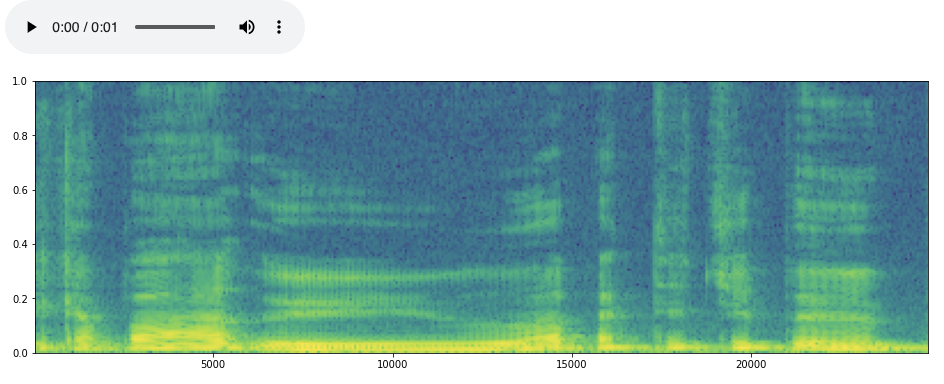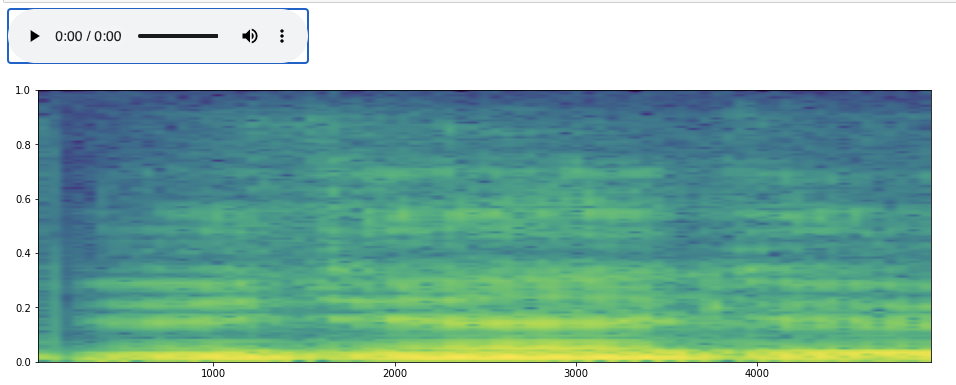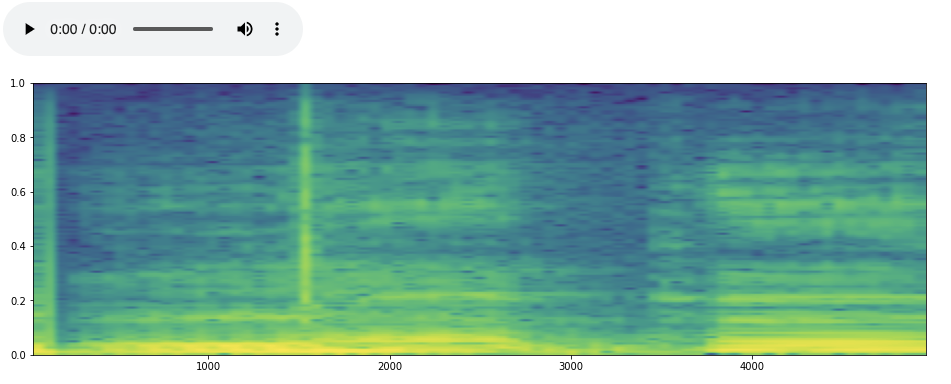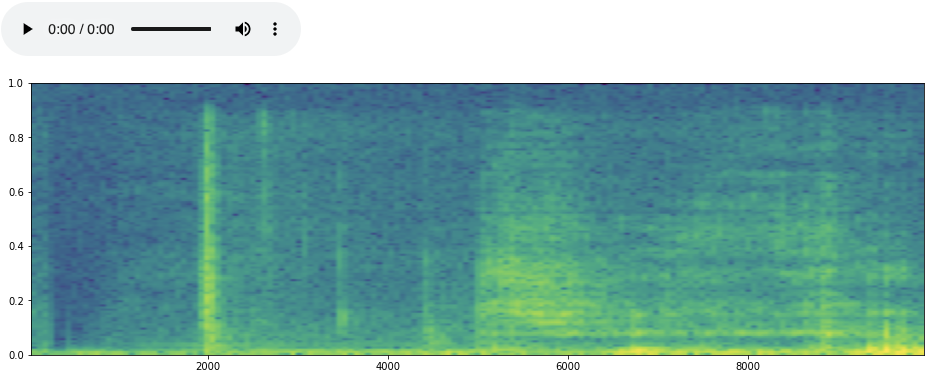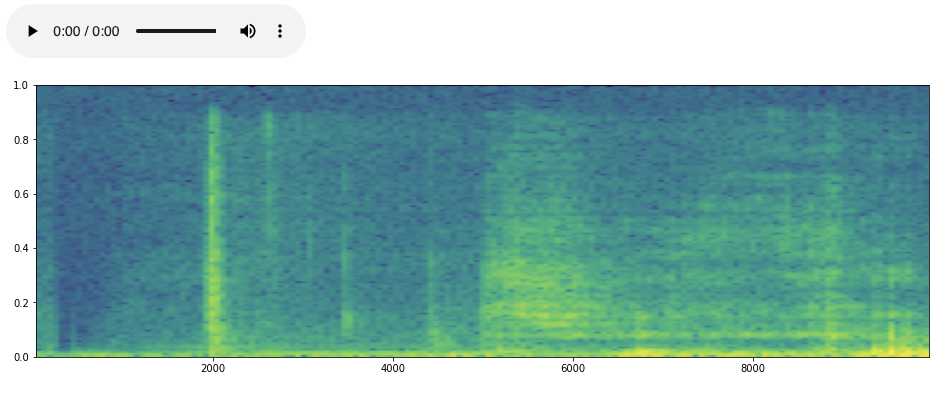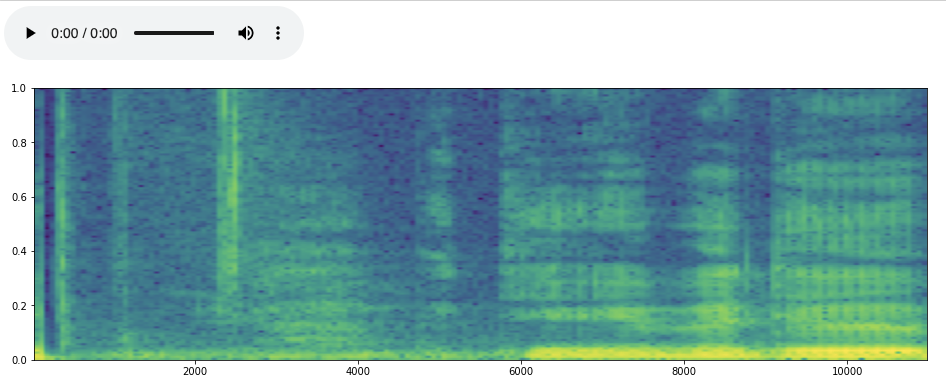Python's serene audio accessor
Project description
taped
Python's serene audio accessor
To install: pip install taped
A quick (audio) peep
In a nutshell:
from taped import LiveWf
live_wf = LiveWf() # make a live audio waveform object (using defaults for every thing)
live_wf.start() # start "recording"
wf_chunk = live_wf[:100] # do stuff (here, grab the first 100 (numerical waveform) samples)
... # do other stuff (save audio, display, pipe into some ML pipeline...)
live_wf.stop() # stop the live_wf acquisition
But obviously, there's more to it. For a quick peep we'll mention just two:
- context manager:
LiveWf, like most stream providing objects, is best used as a context manager (it's thatwith...thing), to automatically "clean up" when finished using. - input_device_index: If you don't specify any arguments when making a
LiveWf, you'll get defaults. You might want to check them out in case they're not what you want. One crucial argument is theinput_device_index, which specifies what the audio source actually is. You can get a list of choices by using thelist_recording_device_index_namesfunction:
from taped import list_recording_device_index_names
list_recording_device_index_names()
[(0, 'MacBook Pro Microphone'), (2, 'ZoomAudioDevice')]
from taped import LiveWf
# you can specify as an integer, a string, or a (int, string) tuple.
#Bare in mind that both integer index (and sometimes names) may change from one session to another.
input_device_index = 'MacBook Pro Microphone'
#note how we use a context manager here!
with LiveWf(input_device_index) as live_wf: # could have also used integer index 0, or both index and name!
# now live_wf acts (sort of) like a numpy array of live audio waveform
# skip the first 10000, samples, then and get 110000 samples after that, taking every other sample (i.e. downsampling)
chk = live_wf[10_000:110_000:2]
len(chk), type(chk)
(22050, list)
from taped import disp_wf
disp_wf(chk, sr=live_wf.sr) # will sound faster than normal because (remember) we down-sampled.
Note, you can use find_a_default_input_device_index to find an input device index for you automatically.
That's what happens if you don't specify any inputs to LiveWf().
But don't trust that it will work every time. It's behavior may change, but right now, it just looks for the first name with word "microphone" in the list of names, and if that's not found, the first containing "mic".
from taped import find_a_default_input_device_index
input_device_index = find_a_default_input_device_index()
So Basically...
Gives you access to your microphone as an iterator of numerical samples.
>>> from itertools import islice
>>> from taped import LiveWf
>>>
>>> with LiveWf() as live_wf:
... first_sample = next(live_wf) # get a sample
... second_sample = next(live_wf) # get the next sample
... ten_samples = list(islice(live_wf, 7)) # get the next 7 samples, using itertools.islice
... a_3_6_slice = live_wf[3:6] # skip 3 samples and get 3 more (so up to 6), using [.] instead of islice
... downsampled = live_wf[0:10:2] # take every other sample (i.e. down-sampling) using [.]
>>> first_sample
-323
>>> second_sample
-1022
>>> ten_samples
[-1343, -1547, -1687, -1651, -1623, -1511, -1449]
>>> a_3_6_slice
[-1323, -1322, -1274]
>>> downsampled
[-1263, -1272, -1220, -1192, -1168]
From there, the sky is the limit.
For instance...
Record and display audio from a microphone
from taped import LiveWf, disp_wf
from itertools import islice
def record_and_display_audio_from_microphone(n_samples=10000, sample_rate=22050):
with LiveWf(sr=sample_rate) as live_audio_stream:
wf = list(islice(live_audio_stream, n_samples))
return disp_wf(wf, sample_rate)
record_and_display_audio_from_microphone()
Record and save audio from microphone
from taped import LiveWf, disp_wf
import soundfile as sf # pip install soundfile (or get your waveform_to_file function elsewhere)
def record_and_save_audio_from_microphone(filepath='tmp.wav', n_samples=10000, sample_rate=22050):
with LiveWf(0, sr=sample_rate) as live_audio_stream:
sf.write(filepath,
data=list(islice(live_audio_stream, n_samples)),
samplerate=sample_rate)
record_and_save_audio_from_microphone('myexample.wav')
# now read that file and display the sound
wf, sr = sf.read('myexample.wav')
disp_wf(wf, sr)
A few more details
taped uses a layered approach.
The LiveWf class you know (and already love) is actually the forth of the following stack of layers:
BufferItems: Provides the items from an audio sensor (also called a mic!); namely the bytes, but also other useful information, such as timestamps (system and sensor).ByteChunks: Provides chunks of bytes from the mic. Essentially, extracts the bytes that theBufferItemsitems give you.WfChunks: Provides numerical waveform chunks; by default in the format ofnumpy.arrayint16integers.LiveWf: Gives you access to a fixed size buffer of the recent history of audio, in waveform format. Essentially, theWfChunkschained together in one continuous (but live/dynamic) array.
Defining a waveform "displayer": if you want to display audio as a spectrogram, and actually play it (in a jupyter notebook), pip install hum.
from contextlib import suppress
try:
from hum import disp_wf
except ModuleNotFoundError:
import matplotlib.pylab as plt
disp_wf = plt.plot
Let's get an input_device_index to use throughout our demo.
from taped import find_a_default_input_device_index
input_device_index = find_a_default_input_device_index()
BufferItems
BufferItems gives you a stream of 5-tuples containing sensor bytes, along with other information (timestamp etc.)
that stream2py, which wraps PyAudio (itself a wrapper of PortAudio) gives us.
If you're okay with the high level interfaces that taped offers, you may want to skip this BufferItems section.
But if you want (or need) to peep under (the first level of) the hood, here's what BufferItems is about.
from taped.base import BufferItems
with BufferItems(input_device_index) as buffer_items:
item = next(buffer_items)
print(f"item is a {type(item).__name__} (a namedtuple) with {len(item)} elements")
for i, x in enumerate(item):
if isinstance(x, bytes):
print(f"{i}: {item._fields[i]}: {len(x)} bytes: {x[:4]}...")
else:
print(f"{i}: {item._fields[i]}: {x}")
item is a BufferItemOutput (a namedtuple) with 5 elements
0: timestamp: 1608336556178995
1: bytes: 8192 bytes: b'\t\x00\x18\x00'...
2: frame_count: 4096
3: time_info: {'input_buffer_adc_time': 135079.42883468725, 'current_time': 135079.60533177, 'output_buffer_dac_time': 0.0}
4: status_flags: 0
from time import sleep
from collections import namedtuple
from pprint import pprint
with BufferItems(input_device_index) as buffer_items:
it = iter(buffer_items) # note the iter(buffer_items) instead of just buffer_items!
item = next(it)
sleep(2)
item2 = next(it)
data_names = ['timestamp', 'bytes', 'frame_count', 'time_info', 'status_flags']
def display_buffer_item(item):
d = dict(zip(item._fields, item))
d['bytes'] = f"{len(d['bytes'])} bytes: {d['bytes'][:4]}..."
pprint(d)
print('\nitem')
display_buffer_item(item)
print('\nitem2')
display_buffer_item(item2)
item
{'bytes': "8192 bytes: b'\\x05\\x00\\x0c\\x00'...",
'frame_count': 4096,
'status_flags': 0,
'time_info': {'current_time': 84806.95996904,
'input_buffer_adc_time': 84806.78105158823,
'output_buffer_dac_time': 0.0},
'timestamp': 1608236216529112}
item2
{'bytes': "8192 bytes: b'`\\xffR\\xff'...",
'frame_count': 4096,
'status_flags': 0,
'time_info': {'current_time': 84807.04517719701,
'input_buffer_adc_time': 84806.87393594165,
'output_buffer_dac_time': 0.0},
'timestamp': 1608236216621991}
See that the three kind of timestamps that we get are different,
but all around 4096 / 44100 = 0.09287..., the chunk size, in seconds.
assert buffer_items.chk_size == 4096
assert buffer_items.sr == 44100
print("differences...")
dict(
timestamp=item2.timestamp - item.timestamp,
input_buffer_adc_time = item2.time_info['input_buffer_adc_time'] - item.time_info['input_buffer_adc_time'],
current_time = item2.time_info['current_time'] - item.time_info['current_time'],
)
differences...
{'timestamp': 92879,
'input_buffer_adc_time': 0.09288435342023149,
'current_time': 0.0852081570046721}
See that we have different bytes!
assert item.bytes != item2.bytes
But add we used it = buffer_items directly instead of it = iter(buffer_items), we would have gotten the same bytes.
Indeed, using iter(...) ensures that we "move forward" in our iteration, where as doing a next(buffer_items)
would just give us the first chunk of the queue (that is, the oldest one).
Until the buffer is full, that oldest chunk is always the same first one.
Once the buffer is full, the next(buffer_items) will give us something different (at the rate of incoming chunks).
We can see this by making the buffer size (stream_buffer_size_s, whose default is 60 seconds) smaller.
Study the following code to see what's happening.
import time
def take_a_nap(nap_time):
print(f"After a {nap_time} seconds nap...")
time.sleep(nap_time)
d = dict()
with BufferItems(stream_buffer_size_s=2) as s:
d[0] = next(s)
take_a_nap(1)
d[1] = next(s)
print(f"... chunk timestamp is {(d[1].timestamp - d[0].timestamp) / 1e6} later\n")
take_a_nap(3)
d[2] = next(s)
print(f"... chunk timestamp is {(d[2].timestamp - d[1].timestamp) / 1e6} later\n")
take_a_nap(1)
d[3] = next(s)
print(f"... chunk timestamp is {(d[3].timestamp - d[2].timestamp) / 1e6} later\n")
Found MacBook Pro Microphone. Will use it as the default input device. It's index is 1
After a 1 seconds nap...
... chunk timestamp is 0.0 later
After a 3 seconds nap...
... chunk timestamp is 2.229115 later
After a 1 seconds nap...
... chunk timestamp is 1.021678 later
ByteChunks
If you just want the bytes of the sensor, use this.
from taped.base import ByteChunks
with ByteChunks(input_device_index) as byte_chks:
byte_chk = next(byte_chks)
assert isinstance(byte_chk, bytes) # now we're just getting bytes
len(byte_chk)
8192
WfChunks
If you want to consume your waveform chunks numpy arrays instead of bytes, use this.
from taped.base import WfChunks
with WfChunks(input_device_index) as wf_chks:
chk = next(wf_chks)
assert isinstance(chk, np.ndarray) # it's a numpy array
assert isinstance(chk[0], np.int16) # ... of int16 integers
len(chk)
4096
LiveWf
And finally, if you'd like to imagine you had a single waveform, as an array (populated continuously with live data from your sensor), use this.
from taped.base import LiveWf
from itertools import islice
with LiveWf(input_device_index) as live_wf:
sample = next(live_wf) # get one sample
chk = list(islice(live_wf, 0, 20000)) # get 20K samples
assert isinstance(sample, np.int16) # a sample is an int16
assert len(chk) == 20000 # chk is an array of 20K samples
disp_wf(chk)
You can also access the list(islice(..., start, stop, step)) samples through the [...] brackets interface.
with LiveWf(input_device_index) as live_wf:
chk = live_wf[10000:54100] # skip the first 10000, and get 44100 samples after that
disp_wf(chk)
with LiveWf(input_device_index) as live_wf:
chk = live_wf[0:44100:2] # get samples 0 through 44100, but only every other sample (so, downsampling)
disp_wf(chk) # if you listen to it with the sample sample rate, it will sound accelerated!
Project details
Release history Release notifications | RSS feed
Download files
Download the file for your platform. If you're not sure which to choose, learn more about installing packages.


